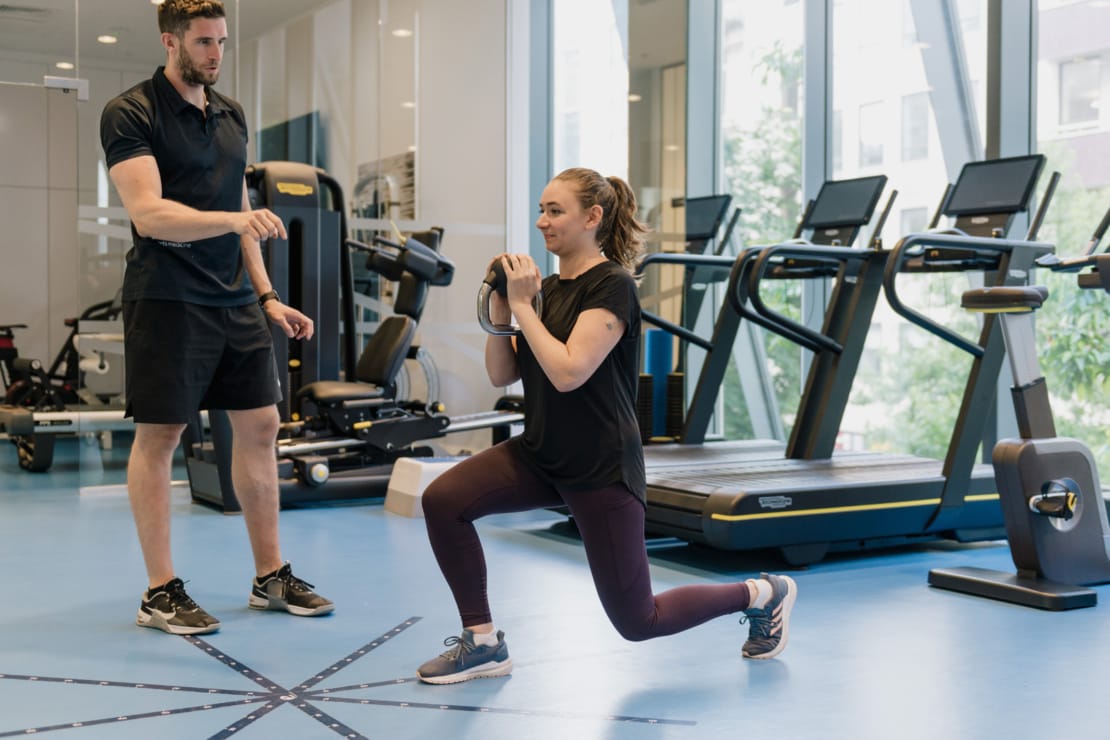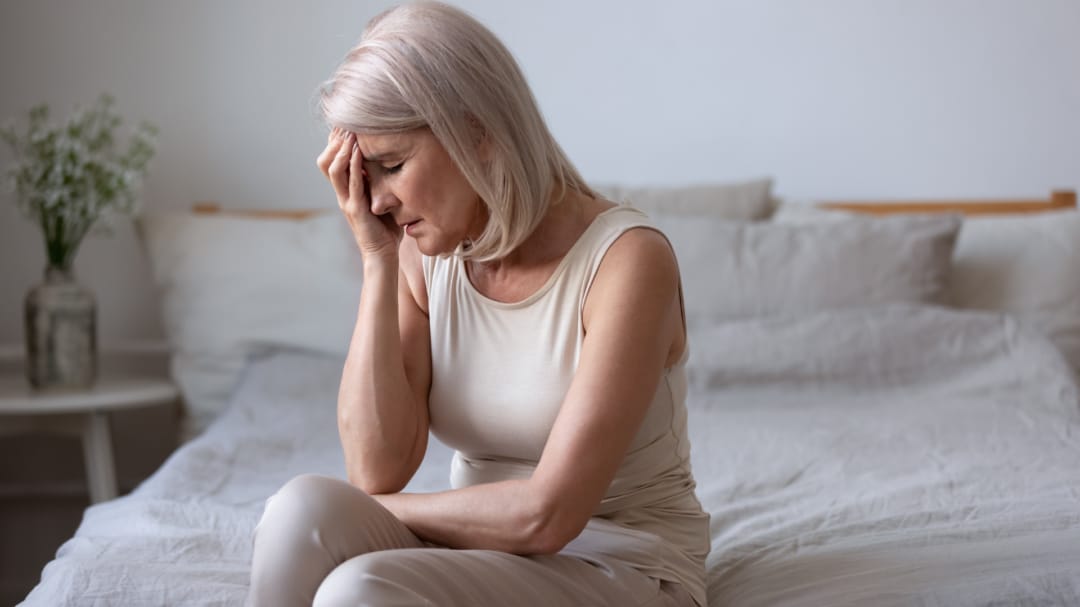How to Train Around Your Menstrual Cycle

Harriet Ranger
Musculoskeletal & Pelvic Health Physiotherapist
- 18 April, 2024
- Women's Health
- 6 min read
How to Train Around Your Menstrual Cycle

We frequently get asked questions about menstrual cycles and training.
For instance, “when is the best time for me to strength training during my cycle”, or “is there a window in my cycle when I am more likely to get injured?” So here, we are going to answer a few of these questions, and provide you with some key information about your menstrual cycle.
Firstly, what is your menstrual cycle?
Your menstrual cycle is amazing! It is so much more than your period.
Often it seems that we talk about the menstrual cycle in a negative way such as the pain it brings or the inconvenience of it, but really, we should celebrate it!
On average, your cycle lasts 28 days, however this is only an average. In fact, it can last from anywhere between 21 days and 35 days (1).
Some people will have cycles that run like clockwork every month, yet most people will have cycles which can vary by 8 days. The first day of your cycle is the first day of your period and it consists of two phases:
- the follicular phase
- the luteal phase
The Follicular phase
This starts on the first day of your cycle and continues all the way to ovulation.
During this phase, your body releases follicle stimulating hormone (FSH), which triggers the growth of follicles in your ovaries.
Your body releases an increase of oestrogen which stops the production of follicles and allows maturity. You will then develop one dominant follicle which will release the egg cell. This is ovulation.
Your egg will live up to 24 hours and will travel down your fallopian tube. If it does not come into contact with a sperm, then it dies. This will then start the luteal phase.
The Luteal phase
The luteal phase starts after ovulation and before your period.
The dominant follicle releases progesterone which causes your uterus lining to soften and prepare to shed. Alongside this, it continues to produce oestrogen and therefore both hormones are raised in this part of your cycle.
For your body to end this cycle and begin the new one, both hormones drop. This is then known as your premenstrual phase.
The Premenstrual phase
Now, as these two hormones drop, your body must adjust to the reduction in these levels.
The common symptoms that you may experience are bloating, headaches, weight changes, food cravings and sleep disturbances. Following the end of the premenstrual phase, your period starts again.
Period
Blood from your previous cycle is shed from inside the uterus through the cervix and vagina.
This is when you have shedding of the lining of your uterus. Again, the length of your period varies from person to person. It tends to be heavier at the beginning and will then tail off. A healthy period cycle is one way of your body telling you that you are healthy.
Tracking your cycle can be a useful way to understand the natural variations for yourself. The more you understand what is normal for you, the easier it is to notice if something is irregular.
When is the best time to train during my cycle?
In all honesty, there is not enough evidence to conclusively say if there is an influence of our menstrual cycle on acute strength performance or adaptations to resistance training (1, 2).
There has been anecdotal evidence from 15 elite athletes who have noted how their menstrual cycle has affected their performance. (4) However, I am pleased to say that this is changing!
There is a great deal of research in the pipeline investigating the different phases of the menstrual cycle and physical training (5). As everyone’s cycles are individualised and as there is currently no conclusive evidence, it is best to follow a personalised programme that works best for you (6, 7).
Hopefully, we will have more concrete evidence in the future, however if we look at the different hormones produced in our cycle, we can look at some potential benefits.
Oestrogen
This is one of our main female sex hormones. It is responsible for puberty, the menstrual cycle, pregnancy, bone health, among several other things.
Its receptors are also found in the brain, and consequently, they play an important role in cognitive function. Your oestrogen levels peak during the late follicular phase (just before ovulation).
Oestrogen helps with the regulation of serotonin which you may know as your ‘good mood’ hormone (8). It also helps with dopamine synthesis, which in turn helps with motivation and satisfaction (8). Therefore, you may find that as your oestrogen levels rise around ovulation, your positivity, motivation and energy levels are also high.
There is some evidence reporting that resistance training is enhanced with higher levels of oestrogen which occurs during the late follicular phase, however, in contrast, there is evidence to disprove this (9). Therefore, we will await the upcoming research with bated breath!
Progesterone
Progesterone is another one of our sex hormones. It has an important role in the early pregnancy stages including both preparation and maintenance. (10)
Progesterone has a part to play in increasing your body temperature during the luteal phase, and it can be beneficial in aiding both anxiety and sleep.
It has also been shown to influence our emotional processing and this may be poorer during the luteal phase, which may in turn affect our skill and coordination (10). Whilst you may not want these calming effects during your sport, the role that progesterone plays in aiding anxiety is vital.
Am I more likely to get injured during certain phases of my cycle?
There is research exploring the rate of ACL injuries in females compared to males, and studies have shown that females are 3-6 times more likely to rupture their ACLs compared to males (11).
Some studies have attributed this increased risk to ligament laxity during the late follicular phase to an increase in oestrogen (12). However, there are several other factors at play other than solely having high levels of oestrogen. The truth is, there is insufficient evidence to claim that there is an increased risk of injury at certain phases of your cycle.
New research is encouraging researchers to focus on a gender-based approach, which will hopefully inform us of the numerous factors that may influence increased ACL injury (13).
The main takeaway is that your cycle is individualised to you. Understanding your cycle will allow you to monitor for any differences or flare ups in injuries at certain times of your cycle and enable you to manage this.
Monitoring things like the length of your cycle and the premenstrual symptoms you feel will allow you to personalise your training to fit in with your symptoms. If you understand your symptoms, you’ll be able to train more frequently and avoid those painful days from preventing you from training.
We hope that this has provided you with some useful insight into your menstrual cycle and physical training around this. Remember, your menstrual cycle is an incredible thing, and it is one of the ways your body shows you that you are healthy.
As it stands, we do not have sufficient evidence to say when the best time is for strength training or when injury risk is higher, however, we do know that your cycle is individual to you and therefore understanding this will allow you to optimise your training!
Want to know more? Check out our Advice Hubs
References
1) Fraser IS, Critchley HO, Broder M, Munro MG. The FIGO recommendations on terminologies and definitions for normal and abnormal uterine bleeding. Semin Reprod Med. 2011;29(5):383-90.
2) Colenso-Semple LM, D’Souza AC, Elliot-Sale KJ, Phillips SM. Current evidence shows no influence of women’s menstrual cycle phase on acute strength performance or adaptations to resistance exercise training. Front Sports Act Living. 2023; 23:5:1054542
3) Zhu JW, Reed JL, Van Spall HGC. The underrepresentation of female athletes in sports research: considerations for cardiovascular health. European Heart Journal. 2022 1;43(17):1609–11.
4) Findlay RJ, Macrae EHR, Whyte IY, Easton C, Forrest LJ. How the menstrual cycle and menstruation affect sporting performance: experiences and perceptions of elite female rugby players. British Journal Sports Medicine. 2020. 54(18):1108-1113
5) Ekenros L, von Rosen P, Norrbom J, Holmberg HC, Sundberg CJ, Fridén C, Hirschberg AL. Impact of Menstrual cycle-based Periodized training on Aerobic performance, a Clinical Trial study protocol-the IMPACT study. Trials. 2024 Jan 29;25(1):93
6) McNulty, K.L., Elliott-Sale, K.J., Dolan, E. et al. The Effects of Menstrual Cycle Phase on Exercise Performance in Eumenorrheic Women: A Systematic Review and Meta-Analysis. Sports Med 2020. 50, 1813–1827
7) Bruinvels G, Hackney AC, Pedlar CR. Menstrual Cycle: The Importance of Both the Phases and the Transitions Between Phases on Training and Performance. Sports Med. 2022 Jul;52(7):1457-1460.
8) Del Río JP, Alliende MI, Molina N, Serrano FG, Molina S, Vigil P. Steroid Hormones and Their Action in Women’s Brains: The Importance of Hormonal Balance. Front Public Health. 2018 May 23;6:141
9) Enns DL, Tiidus PM. The influence of estrogen on skeletal muscle: sex matters. Sports Med. 2010 Jan 1;40(1):41-58.
10) Sundström-Poromaa I, Comasco E, Sumner R, Luders E. Progesterone – Friend or foe? Front Neuroendocrinol. 2020 Oct;59:100856.
11) Martínez-Fortuny N, Alonso-Calvete A, Da Cuña-Carrera I, Abalo-Núñez R. Menstrual Cycle and Sport Injuries: A Systematic Review. Int J Environ Res Public Health. 2023 Feb 13;20(4):3264
12) Chidi-Ogbolu N, Baar K. Effect of Estrogen on Musculoskeletal Performance and Injury Risk. Front Physiol. 2019 Jan 15;9:1834
13) Parsons JL, Coen SE, Bekker SAnterior cruciate ligament injury: towards a gendered environmental approach. British Journal of Sports Medicine 2021;55:984-990.

Advice
Over the last 20+ years our experts have helped more than 100,000 patients, but we don’t stop there. We also like to share our knowledge and insight to help people lead healthier lives, and here you will find our extensive library of advice on a variety of topics to help you do the same.
OUR ADVICE HUBS See all Advice Hubs

